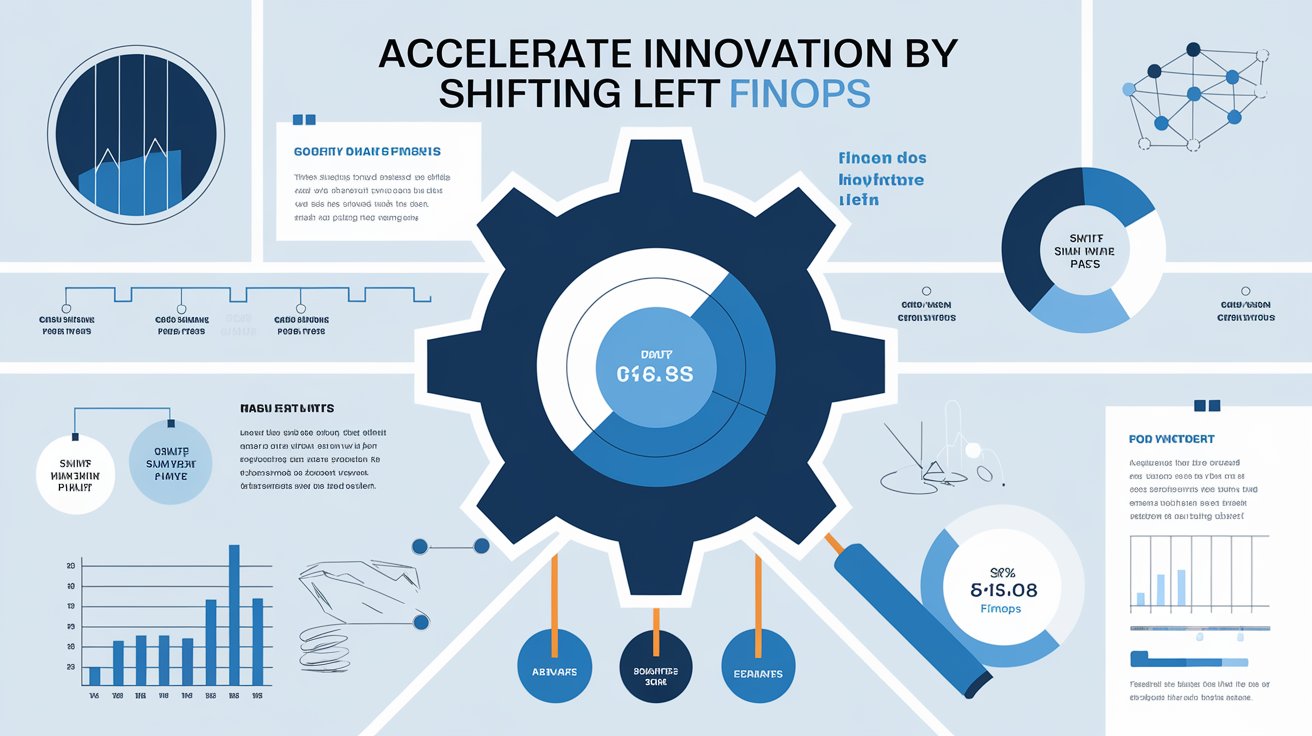In today’s rapidly evolving digital landscape, businesses continually seek ways to enhance efficiency and foster innovation. A significant strategy emerging in this context is the concept of accelerate innovation by shifting left FinOps: part 6. This approach emphasizes the integration of financial considerations early in the software development lifecycle. Organizations can make more informed decisions, minimize costs, and drive innovation by turning left.
Understanding the Shift Left FinOps Approach
The Shift Left FinOps approach entails embedding financial operations and considerations into the initial phases of software development rather than relegating them to the end. This proactive strategy encourages collaboration among finance, development, and operations teams, fostering a culture of accountability and cost management from the outset.
Real-World Application of Shift Left FinOps
To illustrate the effectiveness of this approach, consider a case study of a mid-sized tech company that faced challenges in managing its cloud expenses. Initially, the company implemented financial oversight only after deploying applications, resulting in unexpected costs and budget overruns. After adopting the Shift Left FinOps strategy, the company focused on integrating financial insights throughout the development process.
Case Study Highlights
- Early Cost Estimation: The finance team collaborated with developers to create accurate cost models during the planning phase. This practice allowed the organization to set realistic budgets and avoid over-commitment.
- Infrastructure Optimization: By assessing infrastructure requirements early, the company selected cost-effective resources, reducing wastage and ensuring optimal performance.
- Application Optimization: Continuous monitoring of application performance helped identify inefficiencies early in development. This early detection allowed for timely adjustments, enhancing performance and reducing operational costs.
- Data Optimization: The organization implemented strategies to minimize unnecessary data storage and processing costs, ensuring that only essential data was retained.
- Continuous Monitoring and Optimization: The integration of monitoring tools provided real-time insights into spending patterns, enabling the team to identify areas for further optimization.

Step-by-Step Guide to Implementing Shift Left FinOps
To effectively implement Shift Left FinOps in your organization, consider the following steps:
Step 1: Foster Collaboration
Encourage collaboration between finance, development, and operations teams. Regular meetings and workshops can help create a shared understanding of financial goals and constraints.
Step 2: Develop Cost Models Early
Engage finance teams early in the project to develop comprehensive cost models. This approach allows for accurate budgeting and resource allocation from the beginning.
Step 3: Optimize Resource Allocation
Evaluate resource requirements during the planning phase. Choose infrastructure solutions that align with budgetary constraints while ensuring optimal performance.
Step 4: Implement Performance Monitoring
Integrate performance monitoring tools into the development process. This practice enables teams to detect and address performance bottlenecks proactively.
Step 5: Promote Continuous Improvement
Regularly reviewing financial and performance metrics encourages a culture of continuous improvement. The insights gained can be used to refine processes and enhance efficiency.
Advanced Optimization Strategies
Beyond the foundational steps, organizations can adopt advanced strategies to enhance their Shift Left FinOps approach further:
Cloud Cost Management
Utilize cloud cost management tools to analyze spending patterns and identify areas for optimization. These tools can provide insights into underutilized resources, enabling teams to adjust allocations effectively.
Automation of Financial Processes
Implement automation tools to streamline financial processes. Automated budgeting, forecasting, and reporting can enhance accuracy and reduce manual effort.
Data-Driven Decision Making
Leverage data analytics to drive financial decision-making. Utilize insights from data analysis to inform budgeting, resource allocation, and investment strategies.

Benefits of Shifting Left FinOps
The benefits of accelerate innovation by shifting left FinOps: part 6 extend beyond cost savings. Organizations that adopt this approach experience:
Reduced Costs
Identifying and addressing cost issues early can lead to significant savings. Proactive financial management can also help prevent budget overruns and unexpected expenses.
Faster Time to Market
By optimizing infrastructure and applications early, organizations can streamline development processes. This acceleration results in quicker deployment and faster time to market.
Improved Innovation
With financial constraints addressed early on, developers can focus on creating innovative solutions. This freedom fosters creativity and drives technological advancements.
Enhanced Collaboration
The Shift Left FinOps approach encourages collaboration between finance and development teams. This partnership leads to informed decision-making and a shared commitment to organizational goals.
Also Read: Choice Home Warranty George Foreman
Conclusion: Embrace the Shift Left FinOps Strategy
The ability to innovate quickly and efficiently is paramount in a competitive digital landscape. The strategy of accelerate innovation by shifting left FinOps: part 6 provides organizations with the framework to integrate financial considerations early in the development process. By fostering collaboration, optimizing resources, and embracing continuous improvement, businesses can reduce costs and enhance their capacity for innovation. As you explore the possibilities of this approach, consider how it can be tailored to your organization’s unique needs, ultimately driving success in an ever-evolving marketplace.

















































obviously like your website but you need to check the spelling on quite a few of your posts. Many of them are rife with spelling issues and I to find it very troublesome to tell the reality nevertheless I will definitely come again again.